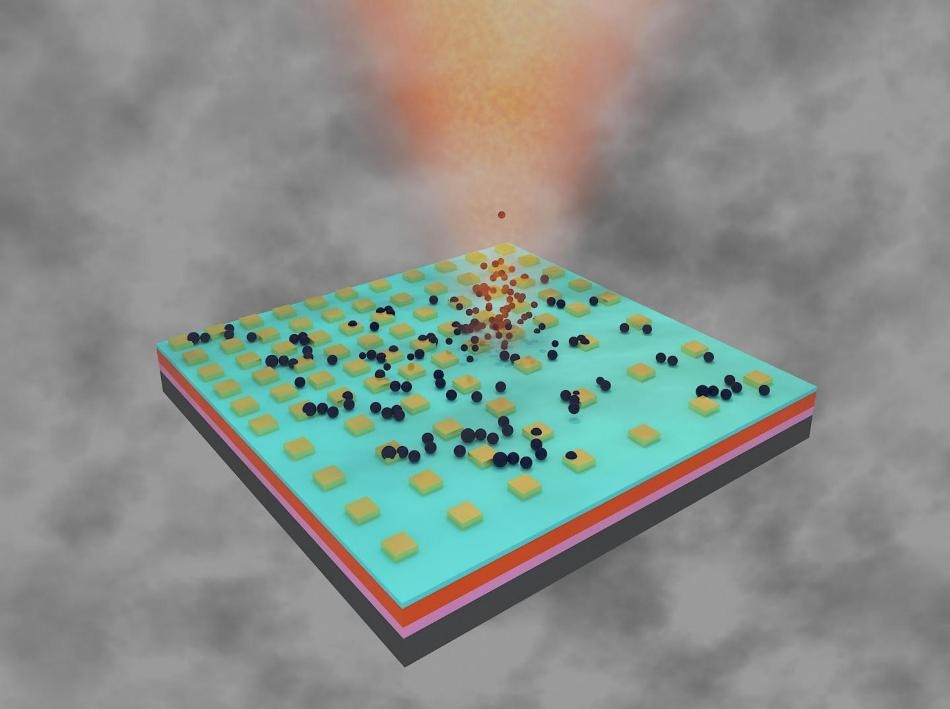May 17 2018
The mid-infrared is a fascinating part of the electromagnetic spectrum that is made up of colors that cannot be viewed by the naked eye. A number of chemical molecules resonate when illuminated by infrared light.
 Illustration of the metasurface interacting with gas molecules. (Image credit: SUTD)
Illustration of the metasurface interacting with gas molecules. (Image credit: SUTD)
This infrared resonance can subsequently be used to "fingerprint" or identify the molecules. The infrared is, thus, useful for a variety of applications, including detecting explosives and narcotics, atmospheric pollution monitoring, measuring food quality, and numerous others. However, infrared optical components are likely to be large, costly, and non-tunable.
Scientists from the Singapore University of Technology and Design (SUTD) in partnership with Dalian University of Technology (DUT) and the Singapore Synchrotron Light Source (SSLS), have shown that tunable phase change materials, which are more often found in data storage devices, can be used to tweak the response of microscale infrared transmissive "metasurface" filters. The filters can be tweaked across the broadband of frequencies in the mid-infrared spectrum where numerous pollutant gasses vibrate.
These infrared filters are so small that they can be incorporated into a smartphone. This would allow you to measure the quality of the oil that has been used to fry your food, measure the air that you breathe, or to measure fluids that are expelled from your body to check the condition of your health.
Assistant Prof Robert Simpson, SUTD lead researcher
This study was reported in Advanced Optical Materials, which is well-known for publishing breakthrough interdisciplinary research that concentrates on light-matter interactions.